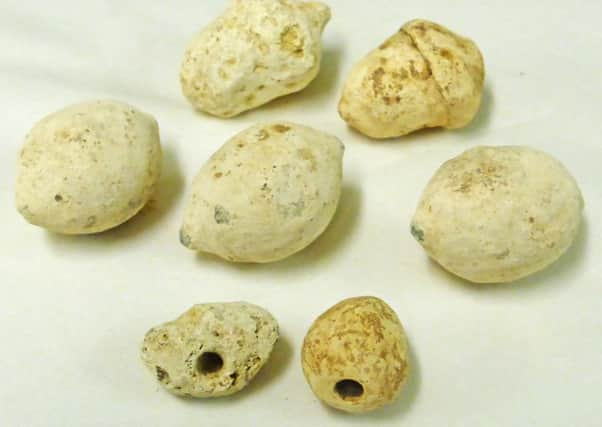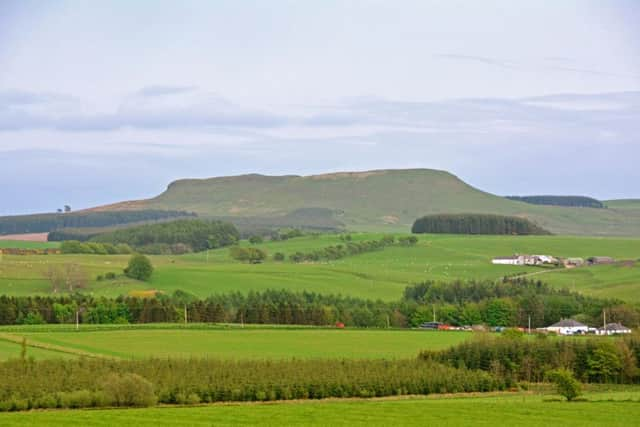Largest haul of Roman bullets found in Scotland


The discovery at Burnswark, near Ecclefechan, Dumfries and Galloway, has led some archaeologists to believe that a battle between Romans and local people was held at the site.
It has long been debated whether Burnswark was a Roman training ground or the location of a siege and battle.


Advertisement
Hide AdAdvertisement
Hide AdFiona Wilson, of Dumfries Museum, said the discovery of the 2,000-year-old bullets added weight to the argument that Romans did fight with locals at the fort.
She said: “It’s an incredibly exciting thought and theory to work on and it certainly, if it’s proved that was the case, then it’s a very dramatic event that took place in Scottish history.
“There has always been a long running debate among archaeologists whether or not the site was a training ground for Romans or the location of an actual battle between the Romans and the local people. That is essentially the crux of the debate.


“The current findings offer further evidence of a siege and a battle. Over time, the debate has swung in this direction.”
Archaeologists and volunteers working at the site in August found more than 300 bullets in a single cache making the discovery the largest in situ find in the Roman Empire.
An earlier dig in 2015 as part of the Burnswark Project found lead sling bullets found scattered across the hillfort rampart.
The mixture of missiles found - from lead sling bullets to ballista balls and arrow heads - suggest a mixed force of Roman auxiliaries and legionaries took part in the action at Burnswark, Ms Wilson said.
Advertisement
Hide AdAdvertisement
Hide AdThe find of carefully moulded lead shot indicates lethal intent as opposed to “expendable” stone or clay shot which might be used for training, she added.
Research now continues to examine when and why a conflict may have taken place at Burnswark.
“It is hoped that further minimally invasive investigations within the Roman camps and the occupied area of the Iron Age hillfort will unravel
more of this enigmatic site,” Ms Wilson added.
An exhibition is now open at Dumfries Museum to showcase the finds and their potential significance to the history of the Romans in Scotland.
DOWNLOAD THE SCOTSMAN APP ON ITUNES OR GOOGLE PLAY
